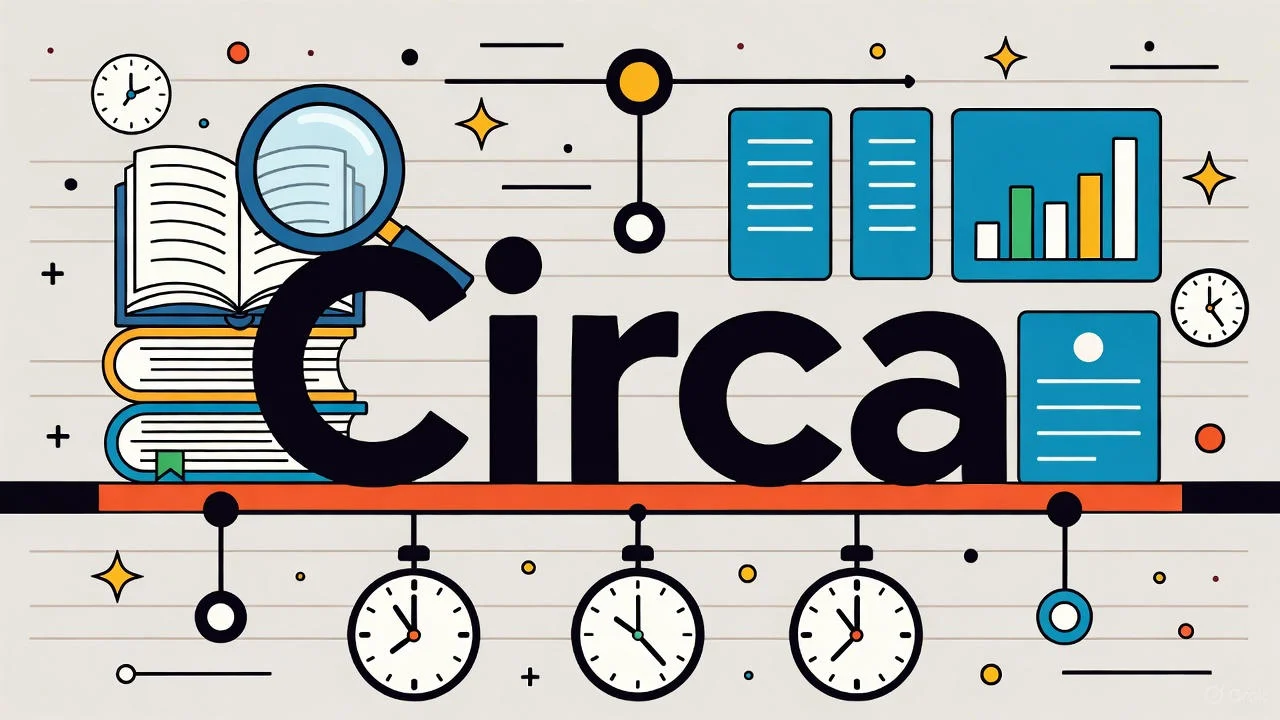Have you ever read something like “circa 1920” in a history book, or “The building was constructed circa 1800,” and paused to ask:
“What exactly does ‘circa’ mean?” 🤔
Circa is a small but powerful word used primarily to indicate approximate dates or times.
It’s common in history, archaeology, and formal writing, but many people don’t know its full meaning or how to use it correctly.
In this article, we’ll explore what circa means, its origins, its use in historical and modern contexts, hidden meanings, and alternatives — so you can confidently use it in writing and conversation.
📖 Definition & Meaning
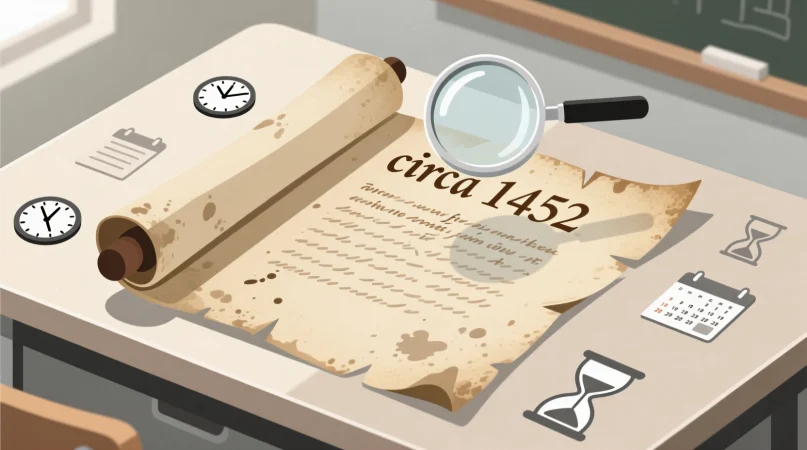
Circa is a Latin-derived term meaning “around,” “approximately,” or “about”.
- Primary Use: To indicate that a date or number is not exact.
- Common Contexts: History, archaeology, art, and biographies.
Example Usage:
“Leonardo da Vinci was born circa 1452.”
Here, it signals that the exact year is uncertain, but it’s close to 1452.
🕰️ Background & History
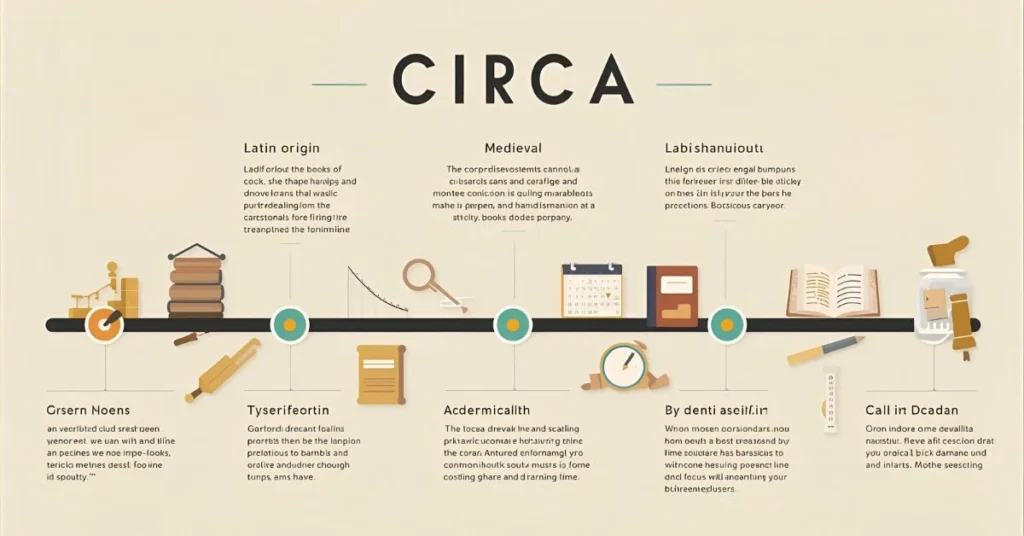
- Origin: Circa comes from Latin, meaning “around” or “about.”
- Historical Use: Medieval scholars and historians adopted it to note approximate dates in chronicles and manuscripts.
- Modern Usage: Today, circa is used in academic writing, museums, historical texts, and even casual conversation to indicate approximations.
💬 Usage in Various Contexts
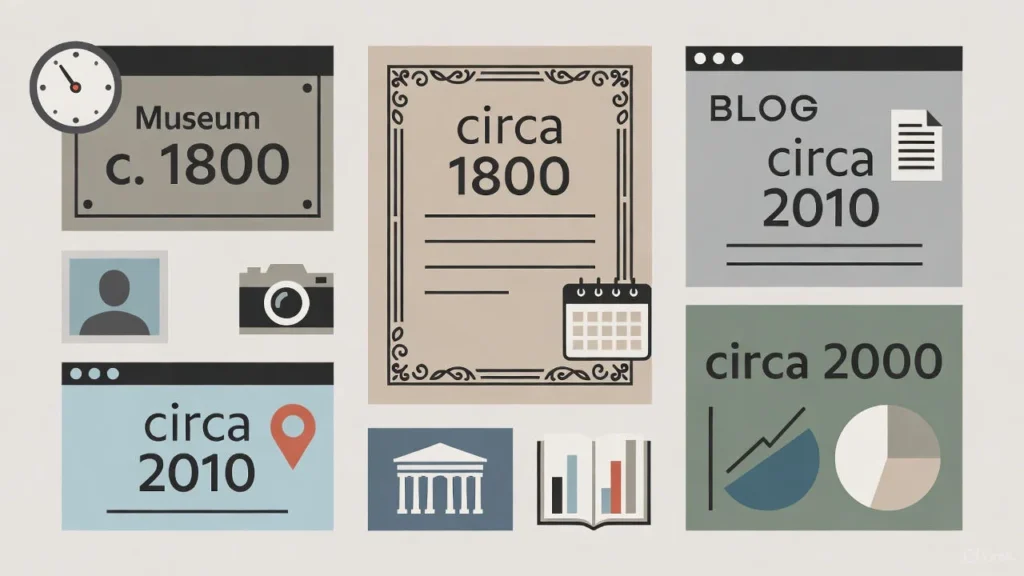
| Context | Example | Meaning / Tone |
|---|---|---|
| Historical Writing | “The castle was built circa 1300.” | Approximate date, formal tone |
| Art / Museum Labels | “Painting created c. 1800.” | Approximate creation date |
| Everyday Conversation | “I moved here circa 2010.” | Informal, approximate |
| Academic Papers | “Population estimates circa 2000.” | Formal, scholarly approximation |
Note: “c.” is a common abbreviation for circa in formal writing.
🌈 Hidden or Alternative Meanings
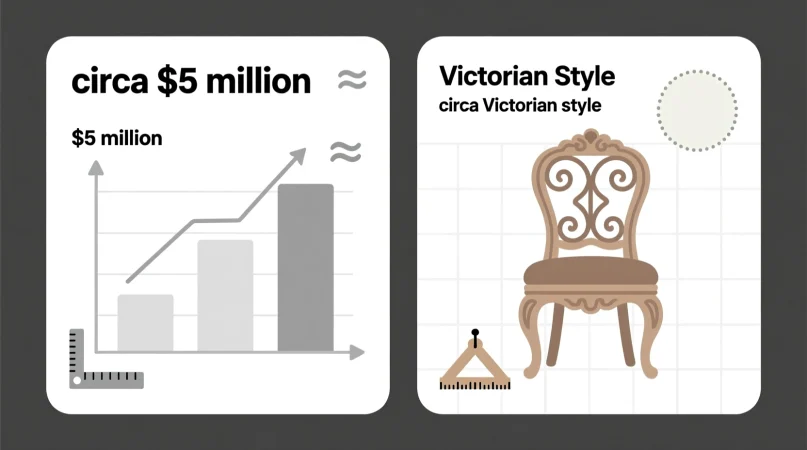
While circa primarily refers to time or quantity, it can occasionally be used:
- To approximate numbers or values beyond dates:
“The company earned circa $5 million last year.”
- In literary or artistic descriptions for stylistic effect:
“The style is circa Victorian period.”
This versatility makes it valuable in both formal and creative writing.
🔁 Similar Terms & Alternatives
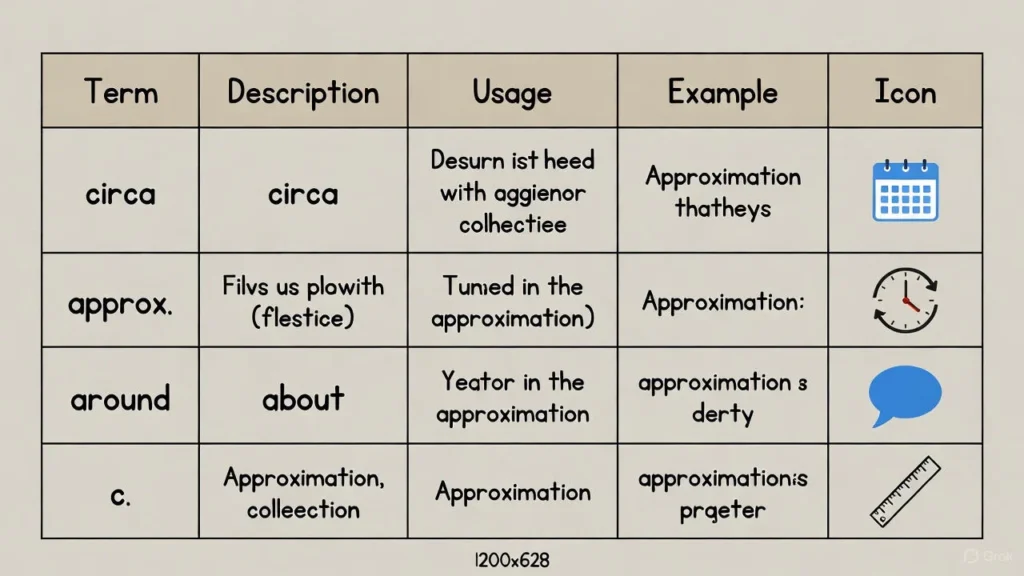
| Term | Meaning / Use | Example |
|---|---|---|
| Approx. / Approximately | Modern English equivalent | “Approximately 200 people attended.” |
| Around | Casual, informal usage | “Around 3 PM” |
| c. | Standard academic abbreviation | “c. 1920” |
| About / Roughly | Conversational use | “I arrived about 10 minutes late.” |
💡 How to Use Circa
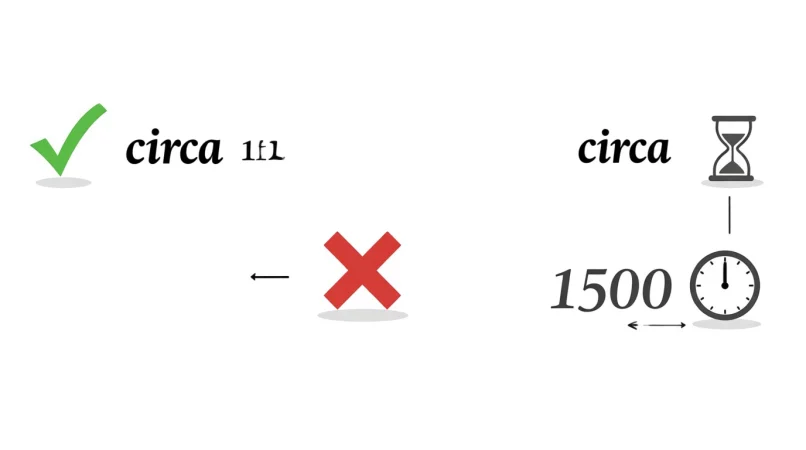
- For dates: Always place it before the date.
Correct: “circa 1500” or “c. 1500”
Incorrect: “1500 circa”
- For numbers or quantities: Use it to indicate estimates or approximations.
Example: “Circa 100 attendees joined the seminar.”
- Tone consideration: In formal writing, use the abbreviation “c.”; in casual writing, spelling it out works.
🌍 Regional & Cultural Differences
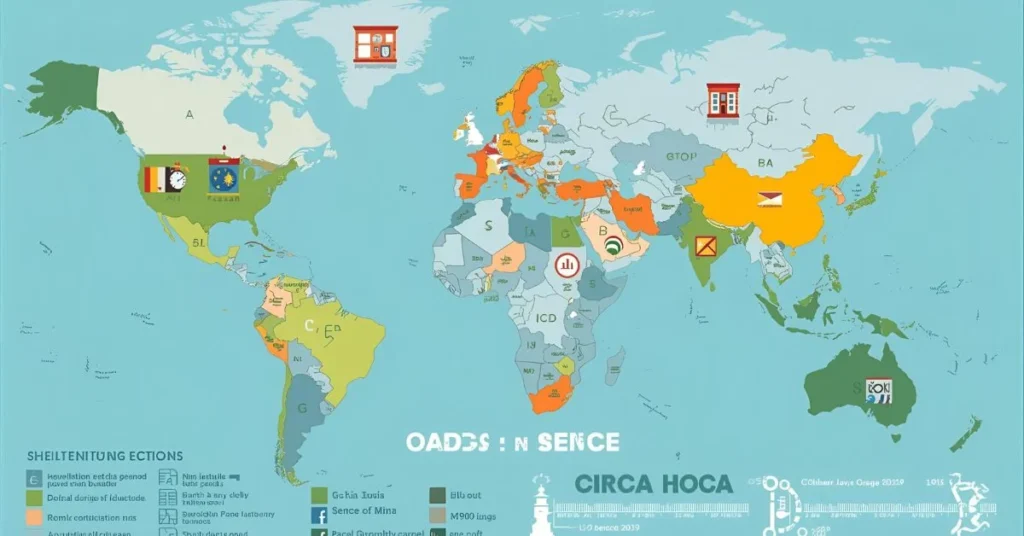
- English-speaking countries: Widely understood in academic and casual contexts.
- Non-English contexts: Often translated into the local equivalent for “about” or “approximately.”
- Professional / Academic: Preferred in historical, archaeological, and museum contexts.
💻 Usage in Online Communities & Apps

- Wikipedia / Online Encyclopedias: Common to indicate approximate years in biographies and events.
- Social Media / Blogs: Less formal, used to highlight approximate timelines or numbers.
- Messaging / Casual Writing: Can appear when describing approximate dates or events.
❓ FAQs
Q1: What does circa mean in history?
A: It means “around” or “approximately” when referring to a date or time.
Q2: How do you abbreviate circa?
A: Commonly as “c.” followed by the date (e.g., c. 1800).
Q3: Can circa be used for numbers?
A: Yes, it can indicate approximate quantities or values.
Q4: Is circa formal or informal?
A: Primarily formal, but it can be used informally in conversation.
Q5: Can I use “circa” in casual writing?
A: Yes, it works for dates, numbers, or approximate references, though spelling it out is preferable for clarity.
🏁 Conclusion
Circa is a small word with big utility — a concise, scholarly way to indicate approximations for dates, numbers, or historical events.
Knowing its proper use adds precision and credibility to your writing, whether in history books, academic papers, or casual descriptions.
Next time you see circa 1920 or c. 1800, you’ll know exactly how to interpret it — and how to use it confidently yourself. 📅

